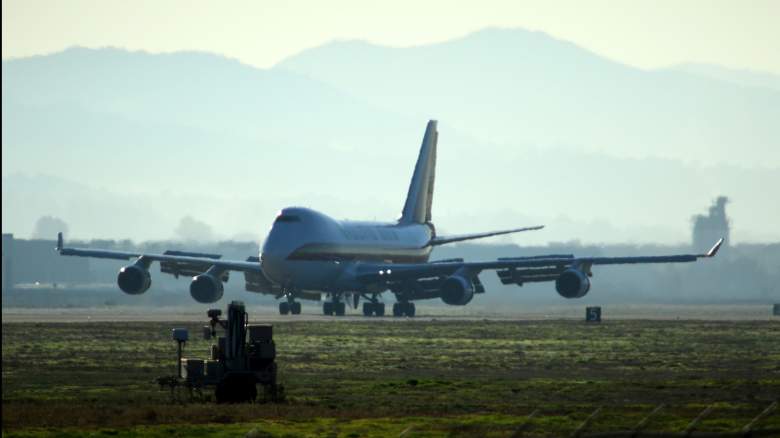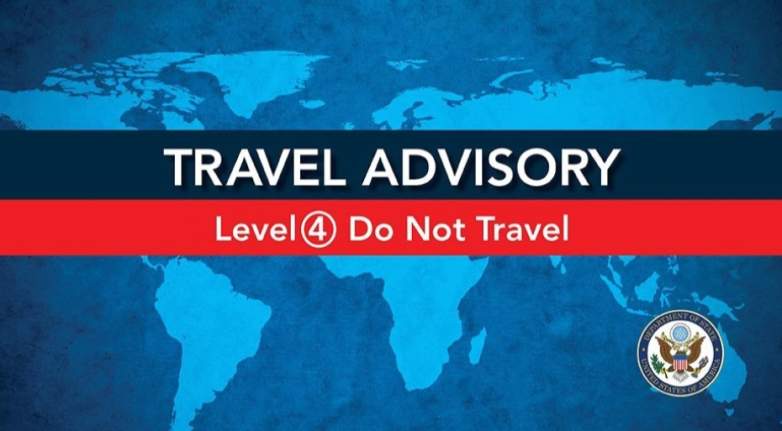
Getty U.S. evacuation flight from Wuhan lands at March Air Reserve Base in Riverside, California.
The World Health Organization (WHO) declared the Wuhan coronavirus a global emergency as more and more cases are being reported worldwide. There are now more than 12,000 confirmed cases and 259 fatalities, all in China to date. The United States and a number of other countries have put in place travel bans in attempts to prevent the spread of the virus.
Here’s what you need to know about the United States travel ban:
1. The United States Has Restricted Entry of Foreigners Traveling From China
The U.S. issued a proclamation on January 31 suspending the entry of travelers who may be at risk of transmitting the Wuhan coronavirus. The presidential proclamation states that any traveler who has been to China in the 14 days prior to their arrival to the U.S. will not be permitted to enter the country. This proclamation excludes American citizens and permanent residents, as well as the immediate family members of American citizens and permanent residents.
Additionally, American authorities have indicated that U.S. citizens and permanent residents who have been in Hubei province in China in the past 14 days will be quarantined for up to 14 days upon return to the United States. The city of Wuhan, the epicenter of the virus outbreak, is located in Hubei province. The 14-day time frame is the estimated incubation period for the virus, and those infected may be contagious even without showing symptoms.
This proclamation is effective February 2 at 5 p.m. ET and will be enforced until further notice.
2. The United States Department of State Advises Against All Travel to China

U.S. Travel Alert 4: Do Not Travel to China
On January 31, the Department of State’s Bureau of Consular Affairs issued a Level 4 Advisory: Do Not Travel. In addition to telling citizens to avoid travel to China, it recommends that all those in the country leave by commercial means, and that all non-emergency U.S. personnel leave the country. This means that the government “has limited ability to provide emergency services to U.S. citizens in Hubei province.”
On January 29, the United States evacuated 210 Americans from Wuhan to California, and it is now planning additional evacuation flights on a reimbursable basis for U.S. citizens with valid passports. When landing in the U.S., the passengers aboard these flights are also subject to a period of quarantine of up to 14 days.
3. Delta, American Airlines and United Have Canceled Flights to China
Delta announced that they have temporarily suspended all U.S. to China flights starting on February 6 until April 30. Until February 5, Delta will still be operating its flights so that customers can continue to leave China if they wish to do so. The last flight from the U.S. to China will leave on February 3, and the last return flight will depart China on February 5.
United announced a similar plan, indicating that all flights to and from China will be suspended from February 6 until March 28, with the exception of flights to Hong Kong. Finally, American Airlines has suspended its flights to and from the Chinese mainland effective January 31 through March 27.
4. The World Health Organization Does Not Recommend Travel Bans
The United States is not the only country to have restricted entry due to the coronavirus. It joins other countries like Australia, Japan, Singapore, Russia and Italy in banning entry for those having recently traveled to China. The WHO is advising against measures such as these. The Director-General of the WHO stated that “Travel restrictions can cause more harm than good by hindering info-sharing & medical supply chains & harming economies.”
The spread of the virus could actually be accelerated as travelers find unofficial ways to enter countries. Instead, the WHO recommends that countries implement screening procedures for the virus at all border crossings.
5. The CDC Expects More Cases of the Coronavirus in the United States
The Centers for Disease Control and Prevention (CDC) expects that more cases in the United States will be identified in the coming days, including person-to-person transmission. It indicates that the risk posed to Americans from this virus is low, but it is important to be informed and to take everyday preventive actions to prevent the spread of respiratory viruses. Check this page for a list of confirmed and unconfirmed cases of the coronavirus in the U.S.
READ NEXT: Australian Prime Minister Scott Morrison: 5 Fast Facts You Need to Know